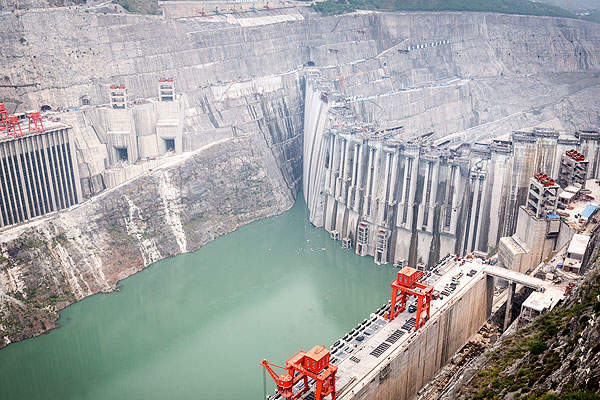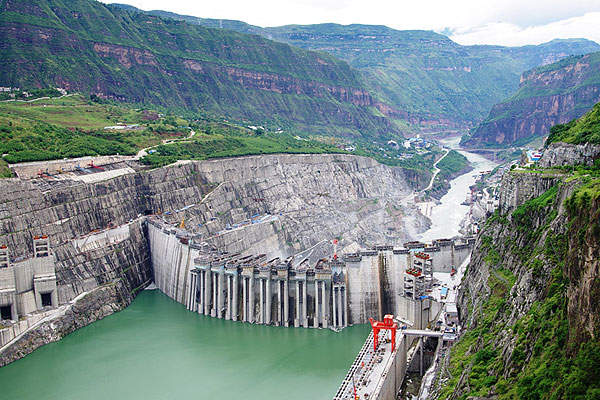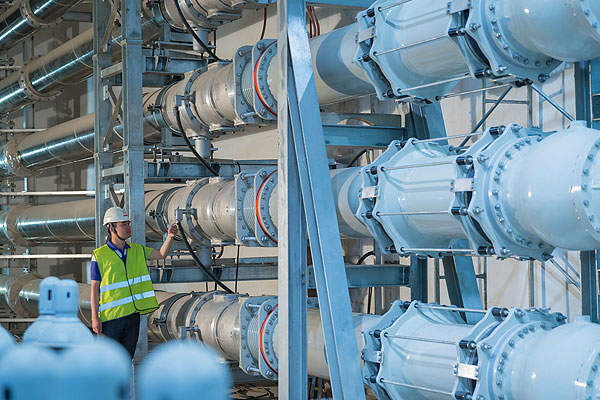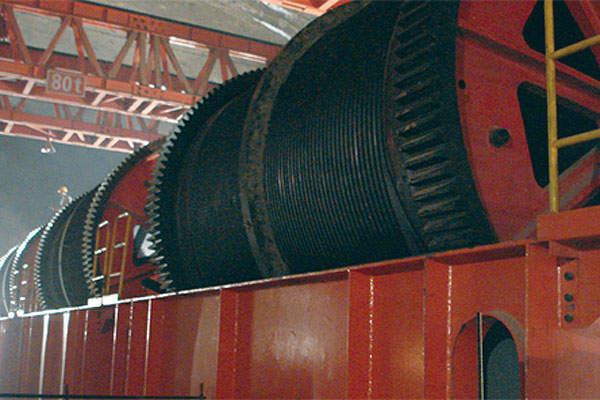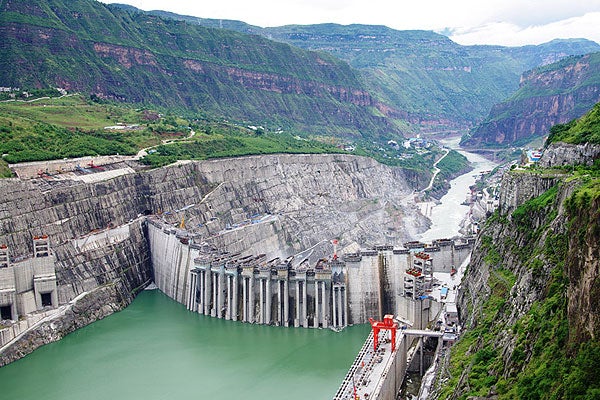
The 13.86GW Xiluodu hydroelectric power plant on Jinsha Jiang River, China, was inaugurated in September 2013. It was fully operational in June 2014, becoming the world’s third biggest hydroelectric power plant.
The project includes a dam, an underground power-generation unit and a flood discharge structure. It is mainly developed for power generation, and sediment and flood control while also improving the downstream navigation of the river.
Xiluodu power plant offsets approximately 150m tonnes of carbon dioxide emissions a year. It reduces the consumption of 41 million tonnes of coal for electricity generation. However, the project displaced approximately 180,000 people.
Xiluodu hydropower plant development details
The Three Gorges Project Corporation, which developed China’s biggest hydropower plant Three Gorges, also developed the Xiluodu power plant. The Xiluodu plant generates 64bkWh of electricity a year.
Xiluodu hydroelectric power plant make-up
The Xiluodu plant is made up of two power houses located on both sides of the dam. The power house comprises 18 Francis turbine-generators and an air-cooled generator with 855.6MVA output.
Each Francis turbine has an output capacity of 770MW while the air-cooled generator functions at a speed of 855.6MVA. The 1,350t generator rotor has a diameter of 13.7m and a height of 4m.
ABB’s HEC7/8 generator circuit breakers are installed at Xiluodu. Equipped with large short-circuits and breaking current, the generators help in cutting off the circuit in the event of fault currents and protect the generator, transformers and other core devices from damage.
Siemens’s gas-insulated-transmission line system is installed at Xiluodu. It has a power capacity of 3,900MVA at a voltage of 550kV and is capable of generating current at a rate of 4,500A. The GIL tubes provide high-resistance to fire and the tunnel can also be used as ventilation and service shafts for personnel. The GIL tubes are welded and are flexible in nature, increasing the tube flexibility and the operational reliability of the plant.
The hydroelectric power project also includes four spillway tunnels, two each on both sides of the power station. The power conduit system includes headrace tunnels, main transmission caverns and ground surface switch stations.
Xiluodu dam details
The Xiluodu dam is a double-curvature arch, concrete dam with a height of 278m and width of 700m. The reservoir has a total storage capacity of 16.5 billion cubic yards, of which six billion cubic yards are for flood control.
The Xiluodu River flow through the dam is controlled using five massive control gates, including a 1,600t gate, which is the world’s heaviest control gate, and four other gates weighing 1,200t each. The fixed hoist headstock gears operate the gates that block the water.
Power transmission from the Xiluodu power plant
The Xiluodu power plant generates roughly 64TWh of power a year. The power is transmitted via the Xiluodu-Zhejiang and Xiluodu-Guangdong overhead transmission lines.
The Xiluodu-Zhejiang HVDC transmission project transfers the electricity generated at Xiluodu to Jinhua, Zhejiang. The transmission line stretches up to 1,680km and has a transmission capacity of 8GW. The transmission project was worth $3.9bn.
The Xiluodu-Guangdong HVDC project is a double 500-kV bipole system with a transmission capacity of 6,400MW. The power is transferred from Zhaotong station in Xiluodo to Conghua station in Guangdong via 1,286km-long transmission line.
The electricity generated from the left bank power house is sold to State Grid Corporation of China. The electricity from the right bank is sold to China Southern Power Grid. The respective electricity sales contracts were signed in July 2013.
Xiluodu hydroelectric power plant construction
The Xiluodu power plant’s construction began in 2005 and the first turbines were commissioned in July 2013. Putzmeister’s Telebelt TB110G was used to pour the concrete. The telescopic belt helps in moving the concrete down to dry aggregate.
Financing for the Xiluodu hydroelectric power plant
The Xiluodu power plant was financed by Yangtze Power, China Development Bank and China Construction Bank.
Contractors involved with Xiluodu hydroelectric power project
Voith supplied Francis type turbines and air-cooled generator for the project. ABB was awarded the contract to provide HEC7/8 generator circuit breakers (GCBs) for the plant.
Siemens was awarded the contract for providing gas-insulated-transmission lines for the plant. The contract for supplying NXP drive units of 90kW-110kW capacity for the headstock gears of the AC drives was awarded to Vacon.
The converter valves and associated cooling system for the Xiluodu-Zhejiang UHVDC transmission project were supplied by C-EPRI Electric Power Engineering.
The contract for supplying the dam monitoring instrumentation was awarded to Geokon. The contract for supplying through-wall ultra high-voltage, direct current bushings for the Xiluodu-Zhexi transmission line was awarded to Alstom.
Putzmeister was awarded the contract to supply the Telebelt system of belt conveyors for laying concrete.
Related content
The 10 biggest hydroelectric power plants in the world
Hydropower is one of the oldest and most widely-used renewable sources of energy.
Installation of Chinese Hydropower Turbines Begins
The installations of the world’s largest hydroelectric turbine generators have begun at China’s Xiangjiaba Dam.

